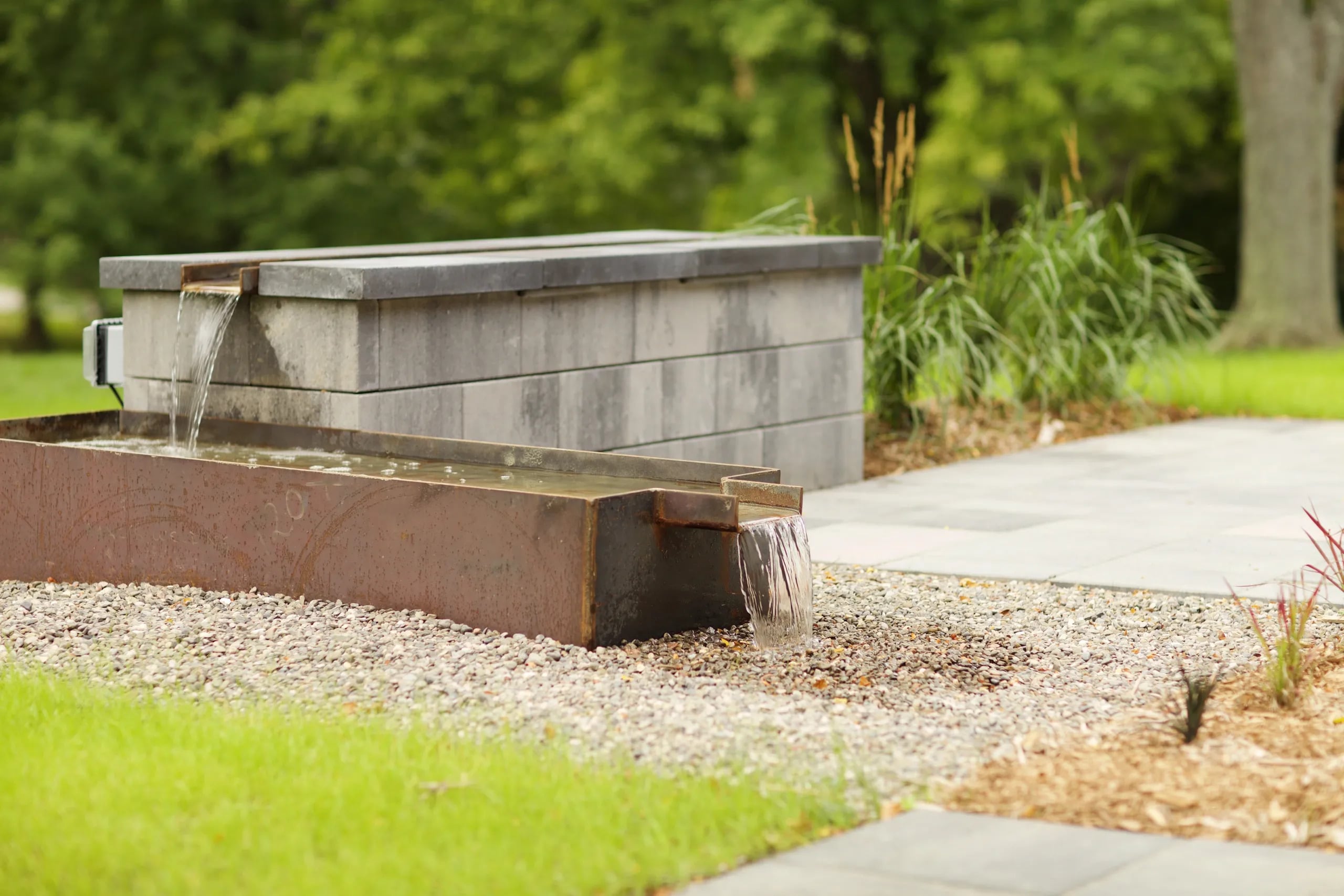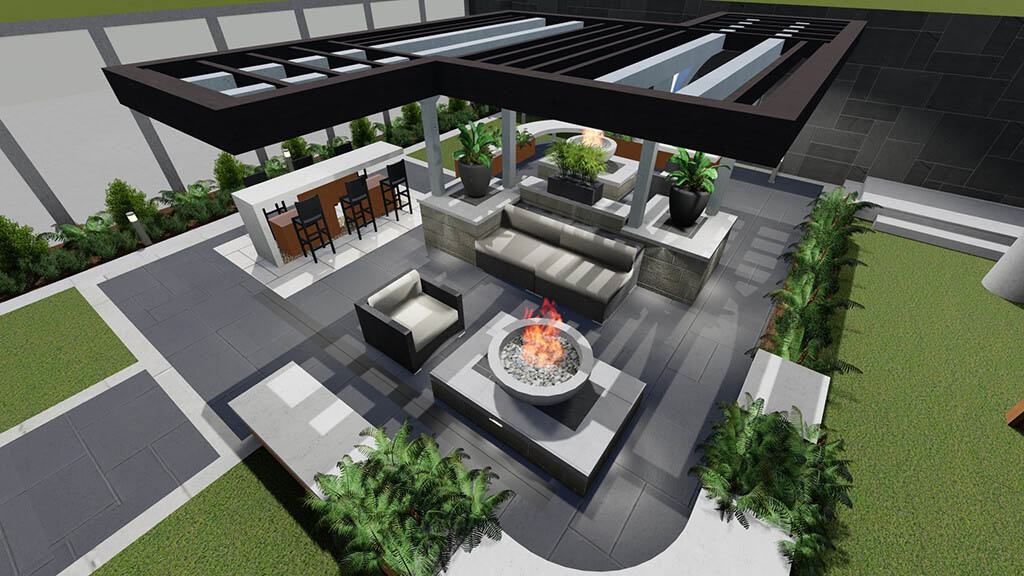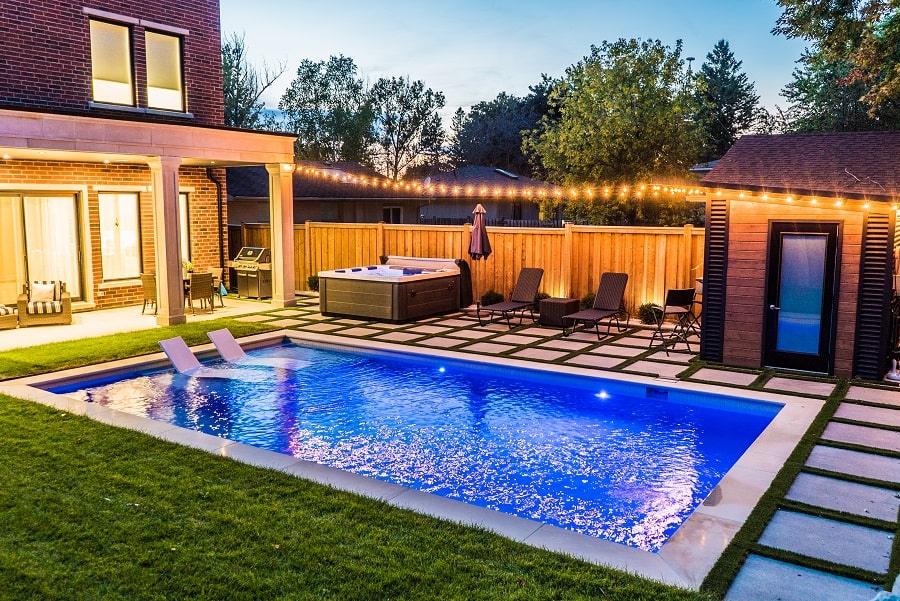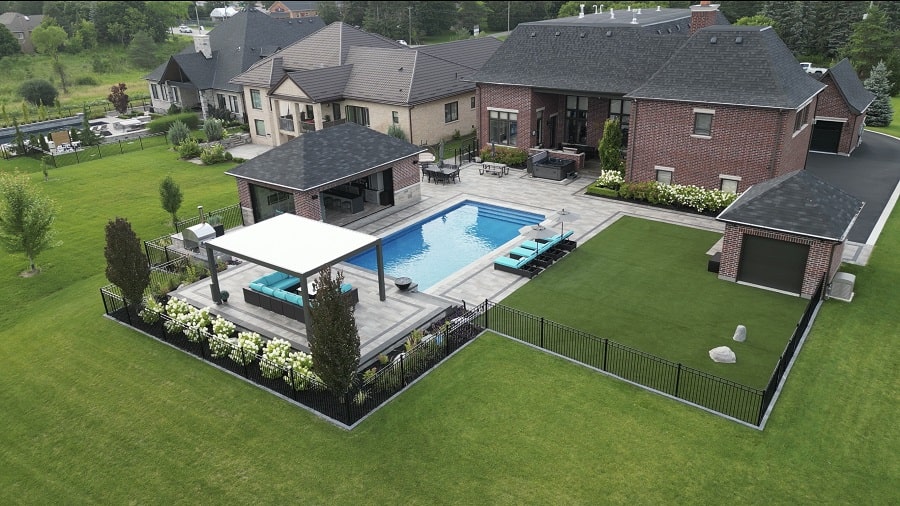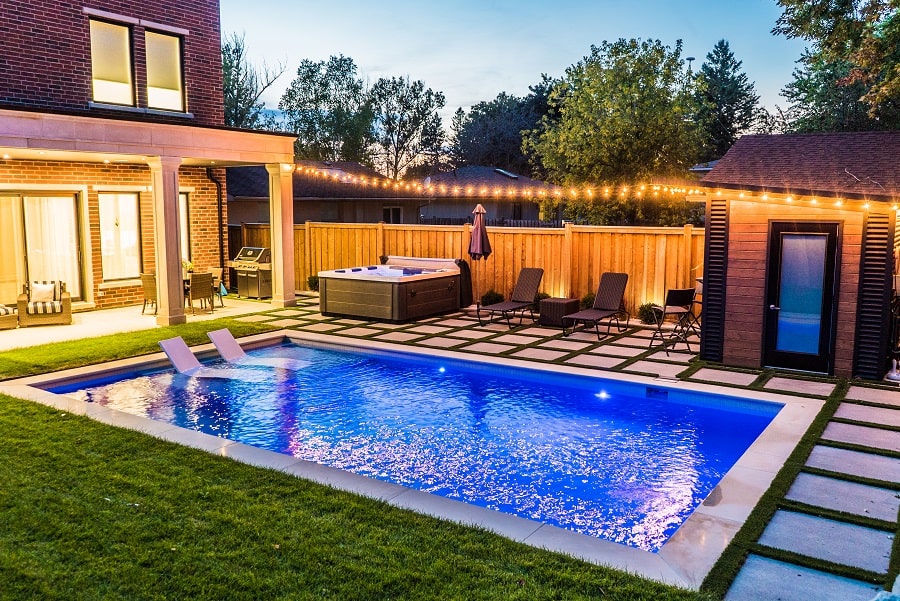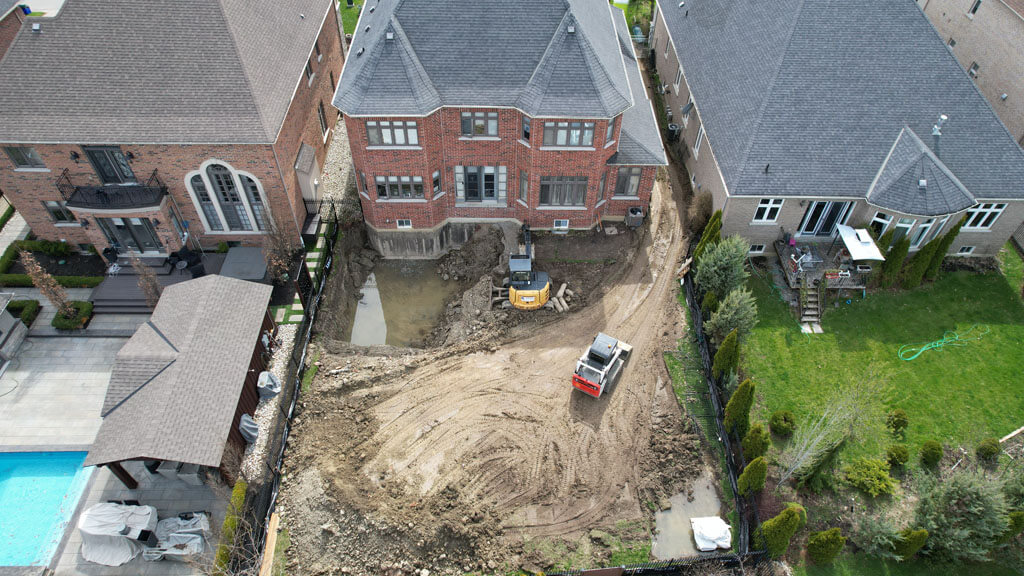Toronto is a city of contrasts, with its bustling urban core and lush, green spaces scattered throughout. As the city grows and evolves, it’s becoming more important than ever to integrate nature into our surroundings. One effective way to do this is through Toronto-specific landscape design that attracts pollinators and wildlife. These creatures not only enhance the beauty of your space but are crucial for maintaining ecological balance. Pollinators like bees and butterflies, as well as other wildlife, play an integral role in pollination and the overall health of our ecosystem.
As a homeowner or property owner, you have the opportunity to create a beautiful outdoor environment that supports and sustains local wildlife. This guide, crafted by LandCon, one of the leading landscaping companies in Toronto, will show you how to design a landscape that attracts pollinators and supports wildlife in your backyard or front yard. We’ll break down essential design elements that will help you create a wildlife-friendly landscape, from plant selection to water features and beyond.
Why Wildlife-Friendly Toronto Landscape Design Matters
As urban spaces like Toronto continue to expand, natural habitats for wildlife become increasingly fragmented. Urban areas are home to a variety of pollinators, birds, small mammals, and other beneficial species, but these creatures need food, shelter, and safe spaces to thrive. Incorporating landscape design in Toronto that attracts pollinators and supports wildlife can help provide these vital resources.
Pollinators, such as bees and butterflies, are essential for the health of the plants in your garden and the larger environment. They play a key role in pollinating numerous plants, many of which are essential for human food production. Unfortunately, habitat loss, climate change, and pesticide use are putting pressure on pollinator populations. By creating a backyard landscaping design that attracts these creatures, you can make a meaningful impact on local biodiversity while enhancing the aesthetics of your outdoor space.
Additionally, attracting wildlife into your landscape can create a calming, nature-filled oasis in your own backyard. Watching butterflies flutter by, hearing birds sing in the trees, and seeing small animals thrive is an enriching experience that can transform your outdoor space.
Designing a Toronto Landscape That Attracts Pollinators and Wildlife: Key Elements
Creating a wildlife-friendly landscape design in Toronto involves considering the needs of various species and providing them with the resources they need to thrive. Here are the key elements to focus on when designing a landscape that attracts pollinators and wildlife.
1. Choose Native Plants for Toronto Landscape Design
Native plants are essential for attracting local pollinators and wildlife because they provide the food, shelter, and nesting areas that these species have evolved to rely on. Native plants are well-suited to Toronto’s climate, require fewer chemicals and less water, and tend to be more resistant to pests and diseases.
Native plants also support the local food web. When you plant native flowers, shrubs, and trees, you’re creating a self-sustaining environment for pollinators, insects, birds, and other animals. The right plant choices can make all the difference in your landscape’s ability to attract wildlife.
Some native plants to consider for your Toronto landscape design include:
- Black-eyed Susan: This perennial plant is a favourite for bees and butterflies. It produces bright yellow flowers that bloom in summer and fall.
- Wild Lupine: Known for its striking purple flowers, Wild Lupine is a critical food source for pollinators like bees and hummingbirds.
- Red-twig Dogwood: This shrub provides winter interest with its red stems and supports local birds with its berries.
- Bee Balm: As the name suggests, this plant is a magnet for bees, butterflies, and other pollinators.
- Woodland Sunflower: This tall plant adds vertical interest to your garden and attracts a variety of pollinators, including butterflies and bees.
Choosing plants that bloom at different times throughout the year ensures that your garden will provide nectar and pollen throughout the growing season. Working with landscape designers who specialize in native plants, like the team at LandCon, ensures that your garden is both beautiful and ecologically beneficial.
2. Add Water Features to Support Wildlife
Water is a crucial element in any wildlife-friendly landscape. Birds, butterflies, and other creatures need access to clean water for drinking, bathing, and cooling off. Including a water feature in your backyard landscaping design can significantly enhance your landscape’s ability to attract wildlife.
A small pond, birdbath, or even a shallow dish of water can be a lifeline for pollinators and other animals. For example:
- Birdbaths: These are simple to install and provide birds with a safe space to drink and bathe. Position the birdbath in a shady spot to keep the water cool and fresh.
- Ponds or Streams: A pond or a small stream with gentle movement mimics natural water sources, attracting a variety of wildlife, including frogs, insects, and birds.
- Shallow Water Dishes: Placing small dishes of water around your garden provides a safe space for bees and butterflies to hydrate, especially during dry spells.
When incorporating water features, avoid using chemicals or chlorine, as these can harm pollinators and other wildlife. A natural water source will help maintain a healthier garden ecosystem.
3. Provide Shelter and Nesting Areas for Wildlife
Wildlife-friendly gardens also need to offer shelter for animals to hide from predators and to rest. Birds, for example, need places to build nests, while small mammals require cover from the elements.
There are several ways to create shelter for wildlife in your Toronto landscape design:
- Birdhouses: Installing birdhouses in your garden gives birds a safe place to rest and build nests. Make sure the birdhouse is designed for the specific species you want to attract, such as chickadees, bluebirds, or wrens.
- Bee Hotels: These specially designed structures provide a nesting space for solitary bees, which are essential pollinators. Bee hotels can be as simple as a bundle of hollow reeds or more complex designs that attract a variety of bee species.
- Shrubs and Trees for Cover: Native shrubs and trees, such as Serviceberry and Eastern Red Cedar, provide natural cover for birds and small mammals. Additionally, they offer fruits, berries, and seeds that wildlife can feed on.
When designing your garden, think about layering plant heights to provide vertical cover. Taller trees and shrubs can offer higher levels of protection, while low-growing plants can create ground-level shelters.
4. Minimize Lawn Areas and Chemical Use
Lawns are one of the least wildlife-friendly aspects of a garden. They offer little in terms of food, shelter, or habitat for wildlife. Replacing some of your lawn with native plantings or meadow areas can create more diverse habitats for pollinators and animals.
- Convert Lawn to Wildflower Meadows: Wildflower meadows provide an excellent habitat for pollinators. By reducing your lawn area and replacing it with native grasses and flowers, you can attract bees, butterflies, and other beneficial insects.
- Use Organic Alternatives to Pesticides: Pesticides and fertilizers can harm pollinators and wildlife. Opt for organic gardening methods, such as composting, mulching, and using beneficial insects like ladybugs to control pests.
Encourage natural habitats by eliminating the need for constant maintenance, which makes the environment more inviting for wildlife.
Contact Us for Custom Landscape Design!
5. Design with a Layered Approach
A successful landscape design in Toronto that attracts wildlife includes multiple layers of planting. In nature, wildlife thrives in areas that have different levels of vegetation, from tall trees to shrubs, grasses, and groundcover. Creating a layered garden ensures that there is plenty of shelter, food, and places to nest for different species.
For example, consider planting:
- Tall Trees: Provide high shelter for birds and squirrels.
- Shrubs and Small Trees: These provide food and shelter for birds and small mammals.
- Groundcovers and Flowers: These attract pollinators like bees and butterflies and provide habitat for insects.
This layered approach mirrors natural habitats and encourages biodiversity in your garden.
Creating a Front Yard Landscape That Supports Pollinators
The front yard is often the first part of your property that visitors see, and it can also be an essential space for supporting wildlife. A front yard landscape that includes pollinator-friendly plants can make a significant impact on local ecosystems.
1. Planting Native Flowers for Seasonal Bloom
Choose a variety of native plants that bloom at different times of the year to ensure continuous food sources for pollinators throughout the growing season. Early bloomers like Crocus or Trillium provide nectar in the spring, while later bloomers like Goldenrod and Aster offer a vital source of food as summer transitions to fall.
2. Creating Layers with Plant Height and Texture
A layered planting design adds visual interest while providing a diverse habitat for various species. Tall flowering plants like Sunflowers or Joe-Pye Weed can attract bees, while low-growing ground covers like Creeping Thyme provide nectar for butterflies and other insects. This layering also mimics natural environments, which encourages pollinators to frequent your garden.
3. Installing a Pollinator-Friendly Garden Path
Consider integrating a meandering garden path made from permeable materials such as gravel or natural stone, surrounded by pollinator-friendly plants. This can not only make the front yard more inviting but also provide a habitat for insects to roam, adding functionality and beauty to the space. Lavender, Borage, and Yarrow planted along the path can attract bees and butterflies.
4. Providing Shelter and Nesting Spots
Birdhouses and bee hotels aren’t just for the backyard. Adding these structures in the front yard can encourage birds and solitary bees to nest close to your home. Additionally, planting dense shrubs like Spirea or Holly can provide shelter and nesting sites for a variety of bird species. Consider using piles of leaves or brush in corners of your garden to provide cover for small mammals and insects.
5. Including Water Features
Incorporating a small water feature, such as a birdbath or a shallow water bowl, in your front yard creates a much-needed hydration source for pollinators. A small, gently flowing stream or pond also offers a more naturalistic space that attracts wildlife, especially in more expansive front yards. This addition to your Toronto specific landscape design is particularly valuable during dry summer months when water can be scarce.
6. Reducing Lawn Space
Lawn areas provide very little ecological value to pollinators and wildlife. By replacing even a portion of your front lawn with wildflower patches, low-maintenance groundcovers, or a meadow-style garden, you’ll create a richer environment. Plants like Black-eyed Susan, Echinacea, and Wild Geranium will attract pollinators and help diversify the flora in your front yard.
7. Providing Seasonal Interest for Birds and Pollinators
Seasonal interest enhances the beauty of your garden and also provides essential resources throughout the year. Berry-bearing shrubs such as Serviceberry or Winterberry Holly can provide winter food for birds, while plants like Sunflowers give birds and pollinators food in late summer. Including plants that offer multiple seasonal benefits ensures your garden supports pollinators year-round.
By incorporating these strategies, your front yard can become a vibrant, pollinator-friendly landscape that attracts bees, butterflies, birds, and other wildlife while enhancing the beauty of your property. Creating a welcoming, sustainable environment in the front yard not only improves the biodiversity of your home but also contributes to the health of the broader Toronto ecosystem.
Conclusion
Designing a Toronto landscape that attracts pollinators and supports wildlife is a fulfilling way to enhance your property while contributing to the local ecosystem. By carefully selecting native plants, creating water sources, providing shelter, and reducing lawn areas, you can cultivate a garden that nurtures a variety of wildlife. The benefits are twofold: a more beautiful, sustainable space and the satisfaction of supporting biodiversity. Whether you have a small urban garden or a larger backyard, integrating these elements into your landscape design will make a significant, positive impact on Toronto’s natural environment.
Frequently Asked Questions
1. What are the best native plants for attracting pollinators in Toronto?
Some of the best native plants for attracting pollinators in Toronto include Wild Bergamot, Purple Coneflower, and Bee Balm. These plants provide nectar and pollen for bees, butterflies, and other pollinators.
2. Can I create a wildlife-friendly garden in a small space?
Yes, even small spaces can support wildlife. Use vertical gardening techniques, such as adding bee hotels and birdhouses, and incorporate native plants that attract pollinators to maximize your space.
3. How do I ensure my garden stays chemical-free?
To maintain a chemical-free garden, avoid using synthetic fertilizers or pesticides. Instead, use organic methods like composting, mulching, and encouraging beneficial insects to manage pests.
4. Why is water essential in a wildlife-friendly landscape?
Water features like birdbaths, ponds, or small fountains provide hydration and bathing opportunities for birds, insects, and other wildlife. These features attract a variety of creatures to your garden.
5. How can I reduce my lawn area and still maintain an attractive landscape?
Consider replacing part of your lawn with native plantings or wildflower meadows. These areas require less maintenance and provide better habitats for wildlife, while still looking beautiful.
6. How can LandCon help me design a pollinator-friendly landscape?
At LandCon, we specialize in creating custom landscape designs in Toronto that are sustainable, attractive, and supportive of local wildlife. Contact us to learn how we can help you design the perfect garden for pollinators and wildlife.
Design Your Ideal Wildlife-Friendly Landscape Design in Toronto Today
Creating a wildlife-friendly landscape is not only an investment in the beauty of your outdoor space but also a commitment to supporting local ecosystems. By incorporating native plants, water features, and natural shelters, you can create an inviting environment for pollinators and other wildlife. Whether you have a small front yard or a spacious backyard, every green space can make a difference.
Take the first step in transforming your garden into a sanctuary for wildlife and pollinators. Start designing your sustainable landscape today! Consider consulting with experts to ensure your landscape supports the environment while reflecting your personal style. Contact LandCon to learn how our team can help bring your vision to life.



